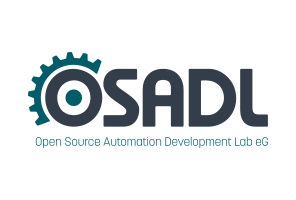Real Time Linux Workshops
1999 - 2000 - 2001 - 2002 - 2003 - 2004 - 2005 - 2006 - 2007 - 2008 - 2009 - 2010 - 2011 - 2012 - 2013 - 2014 - 2015
14th Real Time Linux Workshop, October 18 to 20, 2012 at the Department of Computer Science, University of North Carolina at Chapel Hill
Announcement - Call for papers (ASCII) - Hotels - Directions - Agenda - Paper Abstracts - Presentations - Registration - Abstract Submission - Sponsors - Gallery
Application of RT-Preempt Linux in Unmanned Aerial Systems
Karl Kufieta, Institute of Aerospace Systems, Braunschweig, Germany
The author's institute develops Unmanned Aerial Systems (UAS) with the focus on navigation algorithms and nonlinear control techniques. The goal of the presented work was to develop an autopilot hardware/software solution that is as lightweight as possible and has enough computing power to run the algorithms onboard. Also the autopilot platform had to be suitable for scientific and education purposes. The GPS-Solution is calculated in the navigation algorithm in different posix threads, also the nonlinear control strategy uses neural networks with a high computing effort. The high complexity of the system presumes a model based development environment. As Matlab/Simulink is widely used in engineering applications, Simulink with its autocode abilities has been chosen to develop the algorithms.
To meet the requirements of weight and size an open-source hardware in combination with an OMAP3530 ARM processor and the Preempt-RT Linux is used. In the beginning of the project the RT-Preempt Kernel was optimized to get best results with real-time tests on the embedded ARM processor. After the removal of unneeded parts of the Kernel configuration a SPI-driver and an UART-Driver were created and tested in terms of realtime execution times. The total execution times of the threads with data transfers were a subject of investigation. In a last step a Simulink Linux target was created to be able to program and monitor the realtime hardware with a few mouse-clicks using the model based environment.
As a result a platform was created which is able to run a complete airplane simulation with the nonlinear controller and the navigation solution in software in the loop running at 100 Hz. Also it is possible to replace the airplane simulation with a real airplane and run flight tests. While being in a flight test it is possible to parameterize and monitor the system via Wi-Fi or internet. The autocode environment combined with the real-time Linux and its libraries and drivers will decrease the development cycle times significantly.




